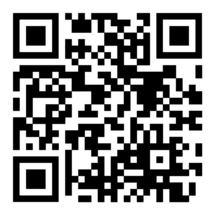“The way QR codes work is surprisingly simple. This is also why this technology is so popular and widely applicable. Each QR code consists of black and white squares that represent numerical codes into which information can be transferred in the blink of an eye," explains Adam Heres Vostárek from PlanRadar and adds: "Therefore, it is not surprising that they are increasingly being used in the construction industry as well . QR codes make it possible to quickly and reliably retrieve the necessary information directly at a specific place of interest to the worker. Of course, this is not only very convenient and practical, but it also prevents misunderstandings in the long run. This saves costs and increases work efficiency.”
QR codes have a number of advantages. Above all, they are easy to use and do not require expensive equipment or sophisticated know-how. They can be easily printed or sprayed onto all kinds of surfaces. QR codes allow you to keep the necessary data up-to-date without having to regularly replace the signboards. Through a simple reader on a mobile device, all interested workers will get the necessary information about the project.
Ways to use QR codes in practice
1. Efficient documentation during construction: QR codes greatly facilitate the overview of the construction process by simplifying documentation and keeping a construction diary in digital form. Each part of the build can be marked with a QR code containing information about the date of installation, materials used, suppliers, and even defects or error checklists. In this way, the risk of misunderstanding and interruption of construction work is minimized. Different workers can scan QR codes to get detailed problem data, track work done and record their own activity, improving communication efficiency and minimizing information loss.
2. Materials and equipment tracking: QR codes allow easy tracking of materials and equipment used from production to installation. Each can be assigned its own QR code, which contains information about the supplier, date of manufacture, method of use and other relevant data. In this way, the movement of material can be tracked and its history can be ascertained, which helps in compliance with standards and quality control. It is also an excellent help for facility managers.
3. Safety on the construction site: QR codes are also useful for improving safety on the construction site. Workers can scan QR codes located on equipment or machinery to access safety and usage instructions, minimizing the risk of workplace injuries and improving the overall work environment. In this way, it is also possible to ensure the registration of responsible persons and records of operation, which, in addition to increasing efficiency, contributes precisely to the safe operation of construction equipment. The same applies to the maintenance and management of an already approved object.
4. Communication and service records: QR codes can also be used to improve communication between all parties involved in a project. For example, subcontractors and their teams can use QR codes to access up-to-date plans, instructions or service records needed for their work. This enables fast and, above all, accurate sharing of information, which leads to a reduction in errors resulting from poor communication or working with outdated data.
5. Building Model Information (BIM) Transfer: QR codes can be used to easily transfer building model information to anyone with a smart device. The codes are simply placed on different parts of the construction site, giving every subcontractor instant access to 3D building information right on their phone. For example, a QR code can be placed in each apartment of a new residential complex to view the latest drawings and planned amenities. In this way, the risk of errors is significantly reduced.
QR codes as an effective tool for sharing information
In today's modern age, most construction workers are equipped with a mobile device, which clearly leads to a greater use of QR codes in practice as an effective tool for sharing information. This trend change reflects the need for comprehensive communication between all stakeholders, especially on large-scale projects with a high number of participants.
“The use of QR codes in the construction industry allows construction managers and all work teams to easily access and share important data. With the growing popularity and gradual introduction of QR code technology into digital platforms for real estate professionals, their potential is quickly spreading throughout the industry, representing a significant advance towards a more efficient and safer execution of construction work," concludes Adam Heres Vostárek.
About PlanRadar
PlanRadar is a SaaS-based digital platform for documentation, task management and effective communication in the construction industry. It operates worldwide, currently in more than 75 markets. PlanRadar digitizes day-to-day processes and communication across a wide spectrum of properties and different phases of the building life cycle. The platform connects all stakeholders and provides access to real-time project information, which


